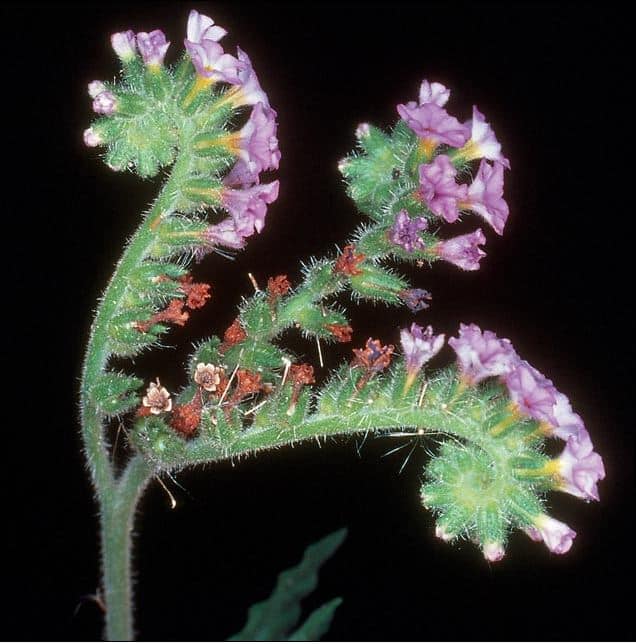Blue heliotrope (Heliotropium amplexicaule) is a major weed of pastures that can be very difficult to control once established.
Arriving with floods, on purchased livestock, fodder, vehicles and machinery, Blue heliotrope can quickly grow amongst pasture grasses and become the dominant groundcover, especially after drought, disturbance or over-grazing. Blue heliotrope reduces pasture productivity and is highly toxic to livestock, especially horses, pigs and cattle. Once established in pastures and roadsides it will spread easily via seed and stem or root fragments.

- Habit: a perennial herb with a scrambling habit, growing no higher than 30cm tall.
- Leaves: It has soft (hairy) leaves arranged alternately along the stem. They have distinct leaf veins and a strong odour.
- Stems and roots: hairy, branched stems rising from a long, thick taproot that reaches deep into the soil and allows regrowth following frost or damage.
- Flowers: clusters of small (4mm) blue-purple (rarely white) flowers with a yellow centre, growing on one side of a coiled stalk.
Careful management and right timing
Management of Blue heliotrope requires a detailed plan and persistence. Careful management of grazing and development of dense summer pastures can outcompete the weed, and herbicide application at the right time can help. A heliotrope leaf-beetle is present in Australia and may help with control, however it must be collected from existing infestations and is not readily available.
If Blue heliotrope is present in grazing land it is beneficial to develop a weed management plan with an agronomist. Infestations are very limited in this region and should be reported to Councils Biosecurity Officer for prompt attention. Further details can be found at on the DPI weedwise website.





